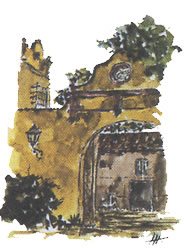Repellent protection test on electrical, signaling or communication cables against rodents (rats and/or mice).
The cables are made up of a conductive wire surrounded by a sheath, generally made of high-density polyethylene (HDPE: High Density Polyethylene), sometimes associated with other compounds such as polyamide 12, terephthalate, etc.
Rodents cause damage to them, causing significant economic losses and sometimes endangering public life. The primary damage to wiring harnesses is due to the rodents´ habit of gnawing objects, due to their need to limit the continued growth, throughout their lives, of their prominent front teeth. To achieve this, they gnaw all kinds of materials.
Different types of components are currently incorporated into the outer sheath of the cables to act as rodent repellents, generating a bitter taste or a burning sensation that prevents the cables from being gnawed on by them.
The tests to evaluate the desired effect of the repellents consist of exposing rodents to the cable under evaluation. These tests can be of choice or non-choice, depending on whether the rodents are simultaneously with the product (cable) under evaluation and ad libitum food, or on the contrary, during a large part of the day they are only with the product under evaluation, but without having their usual food. Choice tests are used to assess the efficacy of a product while non-choice tests can be used to show an innate level of activity for the active substance and to assess the correct dosage. The test is carried out in parallel with the cable treated with the rodent repellent and with a control cable without rodent repellent treatment.
The tests are carried out, as a minimum, in triplicate (three animals in individual cages for the test group and three animals in individual cages for the control group). Testing is generally done for 7, 14, or 30 days, as requested by the client, depending on what they want to declare for their product. The effects produced are evaluated by macroscopic observation of the exhibited pieces with the corresponding description of the observed effects, assigning them a degree of visual damage, and by objective determination of the weight loss of the exhibited pieces, to calculate the percentage of weight loss of the samples with repellent, compared to the samples without repellent, the degree of gnawing. A statistical evaluation is performed to assess whether the degree of gnawing in the control and test samples is statistically significant. Images of the observed effects are included in the results.
In our laboratory, tests can be performed with Wistar or Sprague-Dawley rats, or Hds:1CR (CD-1) albino mice. For tests of rodent repellents on electrical cables, where the degree of gnawing must be determined, rats are the animals of choice. Mice are not good representatives of rodents as mouse damage causes little gnawing mark compared to rat damage.
The client must provide, in addition to the test sample with repellent, the control sample (of the same material and characteristics as the test sample, but without the addition of the test repellent).



